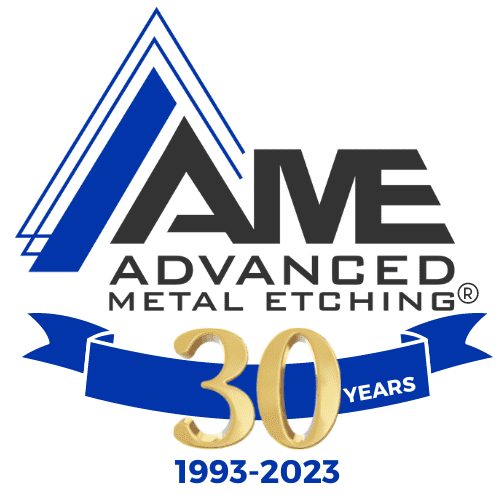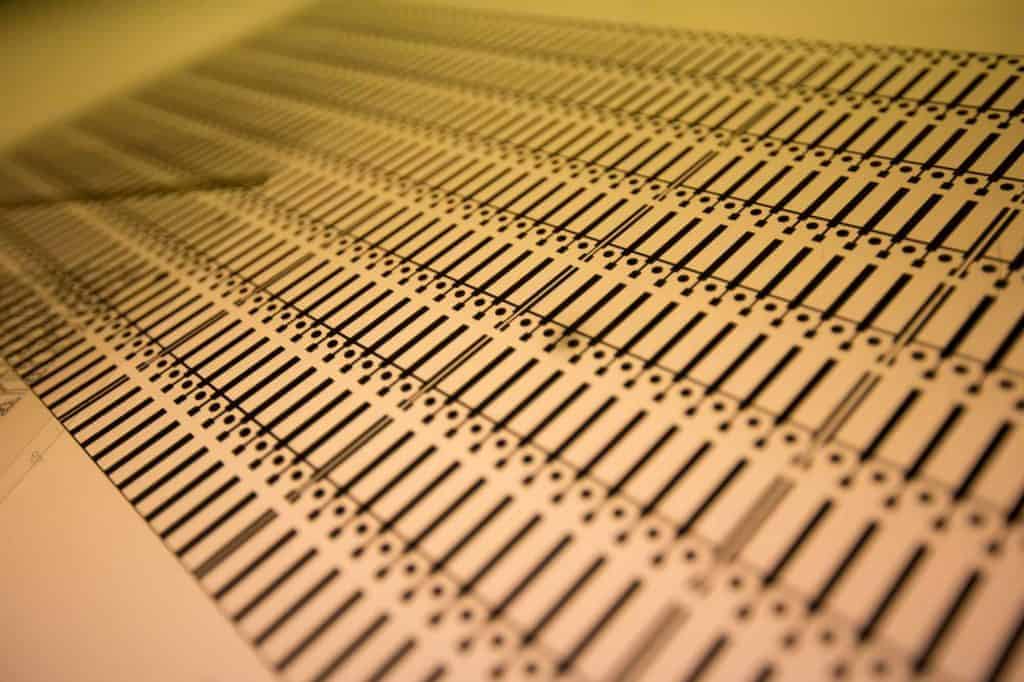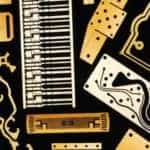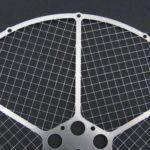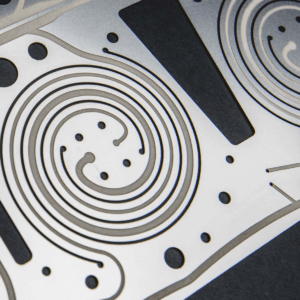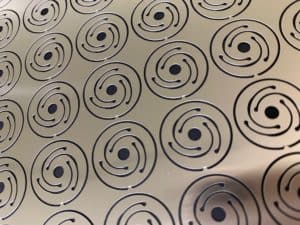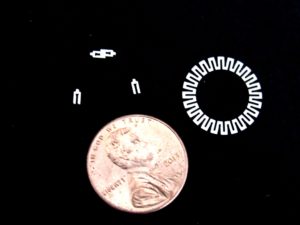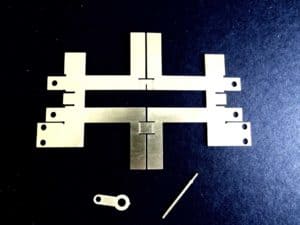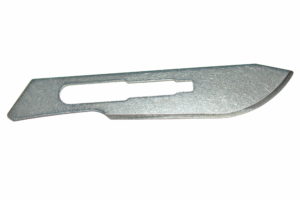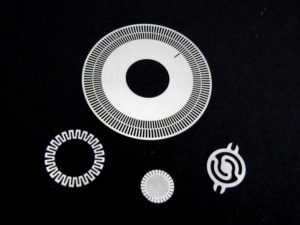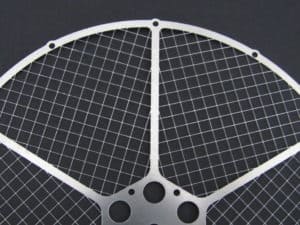If you're a buyer with strict deadlines and short turnaround times, photo chemical etching may be the perfect solution. It can be challenging to find a metal fabrication process or supplier with low lead times and costs who must also adhere to your design specifications (which may include some challenging parts). Photoetching offers precision results without having an adverse effect on structural integrity and is perfect for prototyping to mid-size production runs. When it comes to large volume production for complex designs, it can't be beaten!
What Is Photo Chemical Etching?
Photo chemical etching is a process where a photo-sensitive film, UV light, and chemicals are used to selectively remove certain areas of metal. The parts that remain after the removal process yield an accurate replica of the part design with minimal waste. Photo chemical etching is also known as photochemical machining, chemical etching, and photo etching.
Useful Links
Photo Chemical Etching Advantages to Shrink Lead Times
Speedy Digital Tooling
There are many ways to manufacture metal components, such as laser cutting, punching, stamping, and water jet cutting. For certain types of parts, these processes can extend lead times when it comes to the finished product.
Burr-Free Results
Chemical etching is a process that guarantees burr-free parts. Other processes often leave micro burrs, which can interfere with part function and have the potential to reduce production time in secondary operations like deburring.
Easy to Scale
Photo etching technology allows the manufacturer to generate a repeating pattern onto the tooling film to maximize the number of parts per sheet. Digital tooling is easy to modify for prototype development and therefore significantly reduces project time. Prototypes can be produced in 24 hours! Parts, especially with intricate features can be made quicker than other processes because it is etched simultaneously, saving time for large volume production runs.
A Time Saver for Complex Designs
Complex designs can extend lead times for laser cutting, or wire EDM. Each part feature is manufactured one at a time. With etching, all parts and features process simultaneously. For larger production runs this will save hours of production time.
Low-Cost Benefits of Photo Chemical Etching
Manufacturing buyers have a different set of challenges than the engineer. While the engineer works on finding the best process to manufacture the part's dimensions, the buyer is focused on keeping costs low. Etching is the go-to metal fabrication technology when the focus is on the production of highly accurate, geometrically complex, feature-rich, burr, and stress-free parts.
Low-Cost Tooling
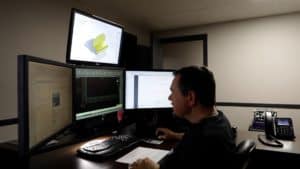
Lower your setup costs with digital tooling. Photo etching tooling film can be made in just a few hours when compared to the weeks or months needed for hard conventional tools and it only costs around $300 dollars instead of thousands!
Burr and Stress Free
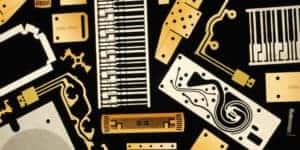
The absence of burrs eliminates the costly secondary deburring operation. There is no hard tooling or heat contact in etching, so stress and heat deformations are non-existent. The chemicals used in etching leave a clean, smooth surface with precision results. This reduces the risk of part failure in product applications.
Half-Etched Bend Lines
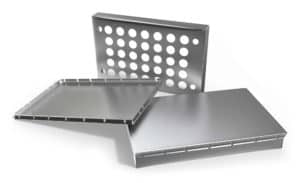
Photo etching capabilities can be used to create various etch depths ranging from 25% and 75%. For applications such as EMI or RFI shielding, the metal is etched at 50% for a bend line that allows 90-degree angles. These types of features allow for hand forming and can eliminate machine forming costs altogether!
Complex Designs
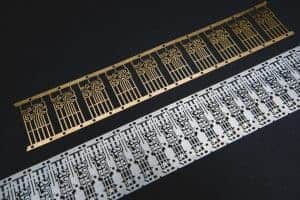
If your part is complex with many intricate features such as lead-frames, filters, or encoder disks, photo chemical etching is the best choice to keep costs low with larger production runs. All features etch simultaneously and the cost is the same for one hole/slot, or a million!
Metals Selection for Photo Chemical Etching
The choice of metals, tempers, tensile strength, or thickness allows you the maximum flexibility in what can be etched from .002" up through .060". We strive to keep a wide variety on hand so we're able to meet your part requirements. With the increasing unpredictability of supply chains, it may be necessary to substitute a metal choice based on unavailability or price. We can offer you assistance in selecting the best option for your needs.
Some commonly used metals are copper, copper alloys, cold-rolled steel, stainless steel, nickel silver, and aluminum.
Aluminum is an affordable, strong, and lightweight material that's common in metal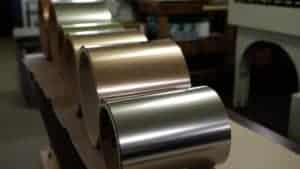 fabrication. Many materials are good for stamping, but not aluminum. It can be brittle and the laser cutting process is challenging because it reflects light in different directions which causes issues with machine sensors. With a few adjustments, chemical etching aluminum provides great results!
fabrication. Many materials are good for stamping, but not aluminum. It can be brittle and the laser cutting process is challenging because it reflects light in different directions which causes issues with machine sensors. With a few adjustments, chemical etching aluminum provides great results!
Copper is a fantastic material for etching because it's softer and thus quicker to process. Nickel Silver (a copper based alloy) does not require plating due to its solderability or corrosion resistance making them perfect choices when you need EMI/RFI shielding!
Stainless steel's popularity has made them one of the most common metals used today across many markets including electronics devices which makes this type ideal if you're looking for something with strength but also low weight compared to other options.
Photo Chemical Etching Cost Tips
Etched Down Metal
If a required metal thickness is not in stock, we can reduce the thickness by etching, without altering the metal properties. A great option when supplies are scarce.
Labor Costs
Labor costs are determined by how many sheets are handled. If your part requires a thicker metal with low tolerances, then smaller sheet sizes are necessary to maintain those tight specifications.
Keep Parts Tabbed in Sheets
If possible we can add a tab to secure each part into the sheet. It makes for easier handling and saves inspection time. Dropout parts will cost more.
